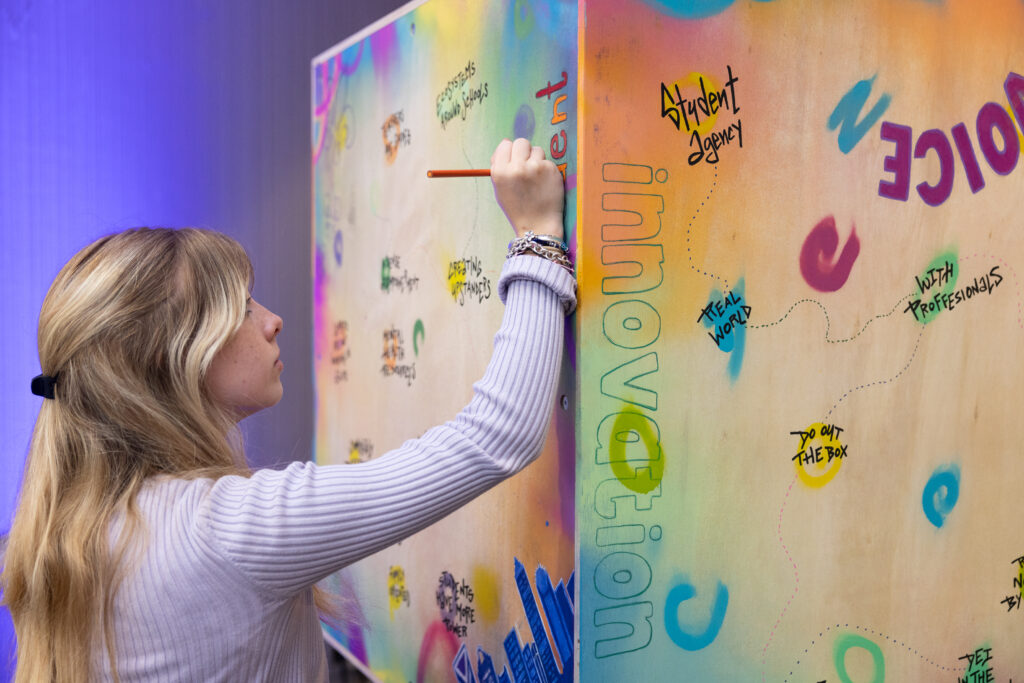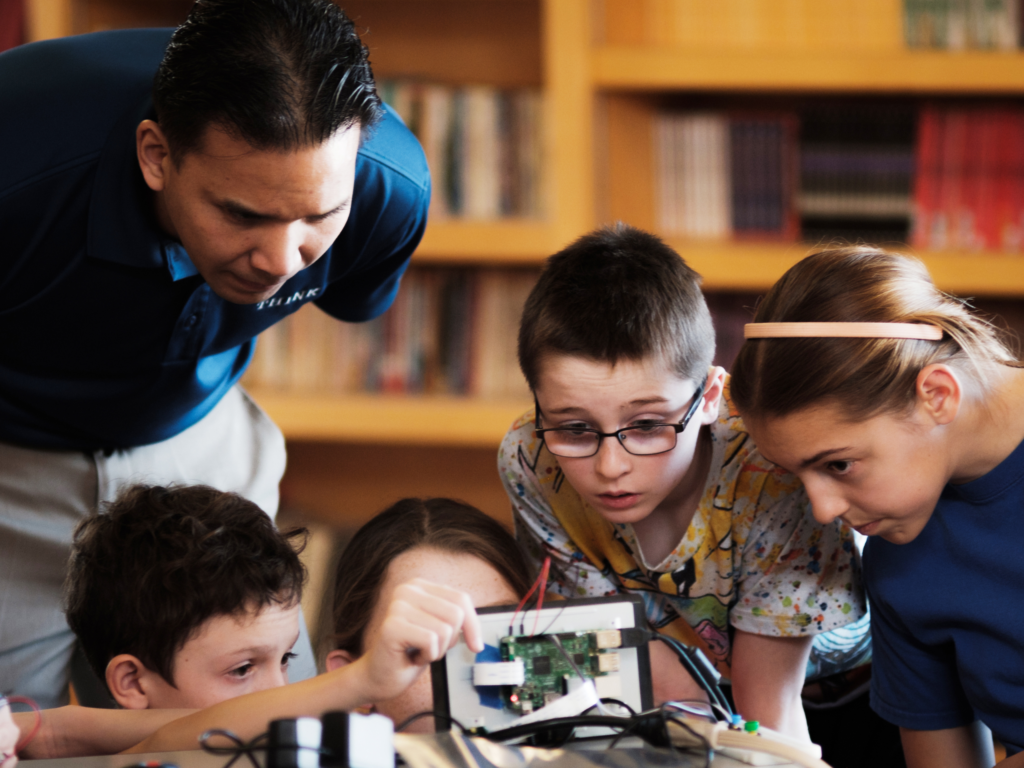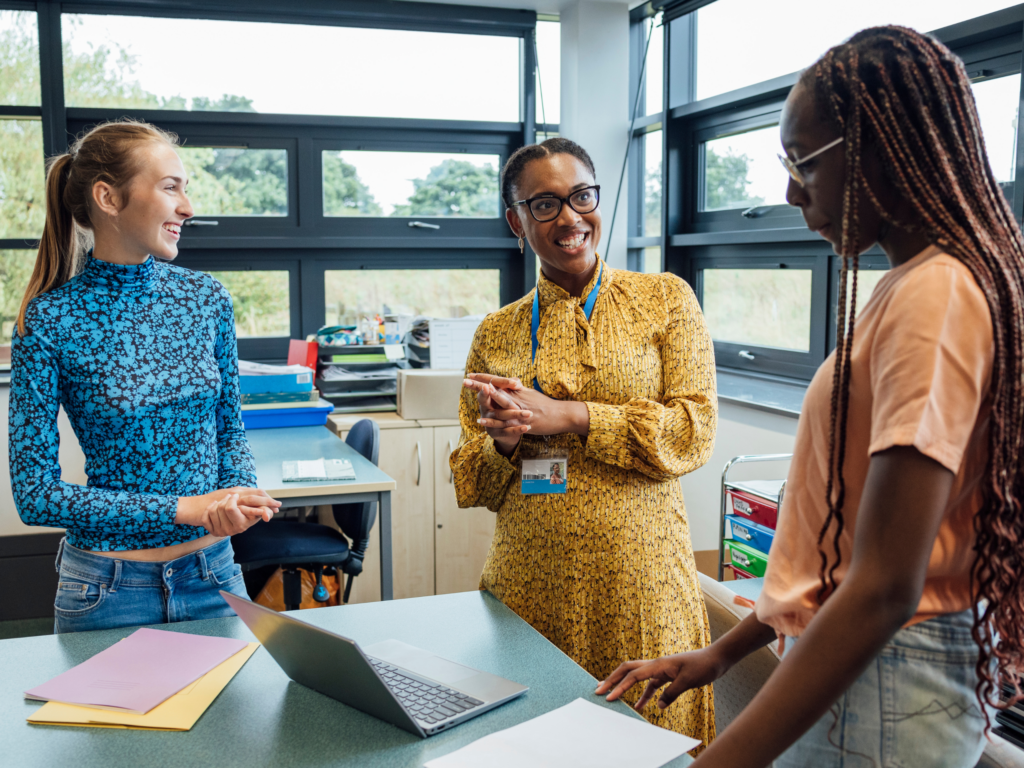By Frances Messano, Senior Managing Partner, NewSchools Venture Fund

As schools rapidly closed down their physical buildings across the country, we saw many of the leaders in our portfolio move quickly and nimbly to implement distance learning plans and provide critical support families need. Across them all, we found five common themes in the approaches they took.
1) A deep understanding of their students and families
Many of our leaders built and designed their schools with their communities as true partners. As a result, when school closures hit, they were able to leverage these strong relationships with families and the community to identify needs quickly, deploy resources, and foster continued two-way communication. For example, Kansas City Girls Prep Academy focuses on supporting the well-being of their community, understanding that attending to the basic needs of every family is critical during this time. To do that, they have developed a case management system in which each staff member regularly checks in with 10–15 families to provide support and ensure students have a supportive learning environment at home. The team has provided financial support for groceries, connections to social services, and technology devices.
2) An unwavering commitment to high-quality learning and high expectations
Our venture teams are laser-focused on how to meet students’ academic and non-academic needs best, finding creative ways to sustain rigor and joy over Zoom. There is a focus on teaching new content and offering choices in how students learn it. Zeta Charter Schools, in New York City, immediately went into planning mode once it became known that school closures were happening. Their first step was to assess online learning tools that could provide the highest quality and most cohesive experiences for their students. For literacy, this meant finding programs that used a balanced approach; allowed for teacher feedback, student revision and resubmission of work; and included high-quality reading materials. The Zeta team developed schedules to support students in age-appropriate ways and leveraged relevant and adaptive online learning tools. In addition to this, students spend time participating in small group instruction, in tutoring, in circle and wellness check-ins, and project-based inquiry sessions.
3) A prioritization of social and emotional learning
Our ventures’ teams are placing equal importance on supporting the social and emotional needs of students and families. Many students are experiencing loss and need mental health support so schools are focused on providing opportunities for connection and belonging. For example, at Statesmen Preparatory Academy for Boys in Washington D.C., founder and executive director, Shawn Hardnett believes that the pandemic has not shifted the importance of social-emotional learning (SEL), but it has changed how it happens. Statesmen’s SEL approach has always been grounded in creating trusted relationships across the community, addressing the trauma that staff members have experienced, and applying trauma-informed practices with students as well. At the beginning of the school closures, the team mapped relationships between students and staff members to determine who had the strongest connection with each student. Every staff member has five students whom they check-in with individually at least three times a day, including before the start of each school day. Also, the full school community comes together twice each day, as they did before the pandemic, during a morning meeting and end of day check-in. The purpose of these check-ins is to continue to build a sense of belongingness, one of their core SEL competencies. They created the daily schedule to prioritize the social and emotional health of students by focusing on relationships. Over 95% of students are logging on each day to learn!
4) A head start for schools with technology-enabled self-directed learning
Students who have been attending schools where self-directed learning is a central feature of the model are making the transition to distance learning more easily. A classroom environment that empowers students to choose which subject to focus on, proactively seek help, and use a range of tools to complete a task also prepares those same students to continue learning in a variety of contexts, even at home. Similarly, schools that were using technology consistently as a way to enhance student agency have been able to shift more easily to distance learning because students are continuing to learn on the platforms they’d been using throughout the year. At Purdue Polytechnic High School in Indianapolis, students are used to self-directed learning and pursuing topics that interest them most. Specifically, students create their schedules, pace their work, and frequently connect with teachers, other students, and experts through Google Hangouts. Making the transition to an entirely virtual environment was relatively easy for Purdue teachers and students. In fact, in the first week, 95% of students participated in distance learning, which is higher than their average daily attendance rate.
5) An ability to innovate and quickly shift priorities and practices
Leaders moved quickly to address the impact of school closure while thinking about what lies ahead, including adjusting the school calendar, bolstering student recruitment and retention plans, and rewriting beginning-of-the-year curricula to account for learning loss. Comp Sci High, in New York City, has developed multiple contingency plans to prepare for an unknown future. The short-term, three-month plan includes three different scenarios to relaunch school with a “personalized mini-mester” before the start of the fall term. During the mini-mester, students receive differentiated support based on their academic and non-academic needs so that all students are prepared to resume learning in the fall. Also, the team created a six-month plan that includes enhancing their personalized scheduling and advisory structures, incorporating more asynchronous learning opportunities, and retaining some remote learning to foster student independence. Moving forward, students will have personalized schedules based on how they learn, teachers will continue to post their lessons and videos online, and the school will adopt a mastery-based grading policy. The Comp Sci High team believes their approach will make it easier to shift between in-person and remote learning and allow all students to track, manage, and drive their learning.
As we approach summer and school leaders begin to formulate strategies for the next school year, these five attributes will be critical for supporting all students and families well. Even after the pandemic is over, we believe that these features contribute to strong learning environments. We hope to see the creation and redesign of many more reimagined schools that can meet the needs of the students and families they serve.



